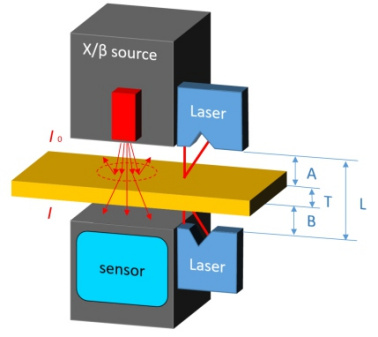Latest Dimensional Metrology, Inspection and Quality News
Both industrial X‑ray inspection and industrial computed tomography are among the imaging methods used in materials testing. But how do they differ and when should which inspection method be used? The following article from MicroVista evaluates both processes and their usage. Equipment Battery

Non-destructive materials testing using X‑rays is used to visualise internal structures of materials such as metals, plastics, ceramics and composites. X‑ray images are two-dimensional and show the absorption of X‑rays by the material, revealing information about the density, thickness and shape of objects. X‑rays are often used to identify defects such as cracks, porosity or inclusions in materials and are widely used in many industrial applications, such as quality control of welds, castings or electronic components.
AI-based systems can be used in automated X‑ray inspection systems to detect and analyse defects. Special algorithms are trained to recognise and classify different types of defects.
Industrial computed tomography is an advanced method that uses a combination of X‑rays and computer algorithms to create three-dimensional images of materials. CT scanners capture a variety of X‑ray images from different angles around the material and then use special software to reconstruct these images into a detailed three-dimensional representation of the material. Industrial CT makes it possible to analyse internal structures of materials in high resolution and create 3D models to visualise complex geometries, defects and internal features of components or workpieces. With CT, much more data can be collected about the component. This makes it possible to better assess component quality. X‑rays, for example, can quickly reach their limits when overlaying geometries, structures or defects. CT, on the other hand, plays to its strengths here and is thus particularly suitable for safety-relevant components. Due to the high accuracy of industrial CT, it is often used in non-destructive testing (NDT) to check dimensions, inspect assemblies and joints or identify defects such as cracks, porosity, delamination and inclusions in complex components or composite materials. Industrial CT is used in various industries such as aerospace, automotive, electronics and medical.
Similar to industrial X‑ray inspection, AI-based systems can be used in industrial CT to automate the evaluation of CT results and thus significantly speed up the inspection.
Features X‑ray Examination and CT at a Glance
When is Which Test Procedure Worthwhile?
The choice of test method depends, of course, on the specific requirements and the available resources. Nevertheless, it can be said in general terms in which cases which testing method makes more sense.
If there are flat components without complex geometry that need to be inspected quickly, industrial X‑ray inspection may be a good choice. Complex and detailed or safety-relevant components that require higher accuracy should be inspected with industrial CT. This provides valuable 3D information about the components. Thus, measurements in depth are possible, which has the advantage that, for example, it is possible to detect whether a defect is relevant or not in machined surfaces. In addition, industrial computed tomography makes it possible to measure hidden contours such as wall thicknesses or channel diameters. It also provides important information on whether areas of the component are overlaid by other geometries with higher density, such as seals in assembly inspections. Industrial X‑ray inspection, on the other hand, can only provide the information that a defect is present in all these examples; more detailed information about the defect is difficult to obtain with this inspection method.
Furthermore, price is also a criterion for deciding which non-destructive testing method to use. Industrial CT is somewhat more expensive than industrial X‑ray inspection. However, costs can be saved significantly with series testing using industrial CT. When choosing the method, calculate how expensive undetected defects can become. In some cases, such as with particularly large components, it may also make sense to contact a CT provider. At Microvista, for example, we have often had customers who had to cut up their components in order to be able to x‑ray them. For us, however, it was possible to get them completely into the CT without any problems.
In summary, it can be said that industrial X‑ray inspection is rather well suited for flat, simple components. Industrial CT, on the other hand, is ideal for obtaining a detailed, three-dimensional image and thus gaining more detailed information about the quality of the component. With both methods, AI can be used to inspect large quantities of components in a much shorter time at low cost.

Inspection Ndt For more information: www.microvista.de